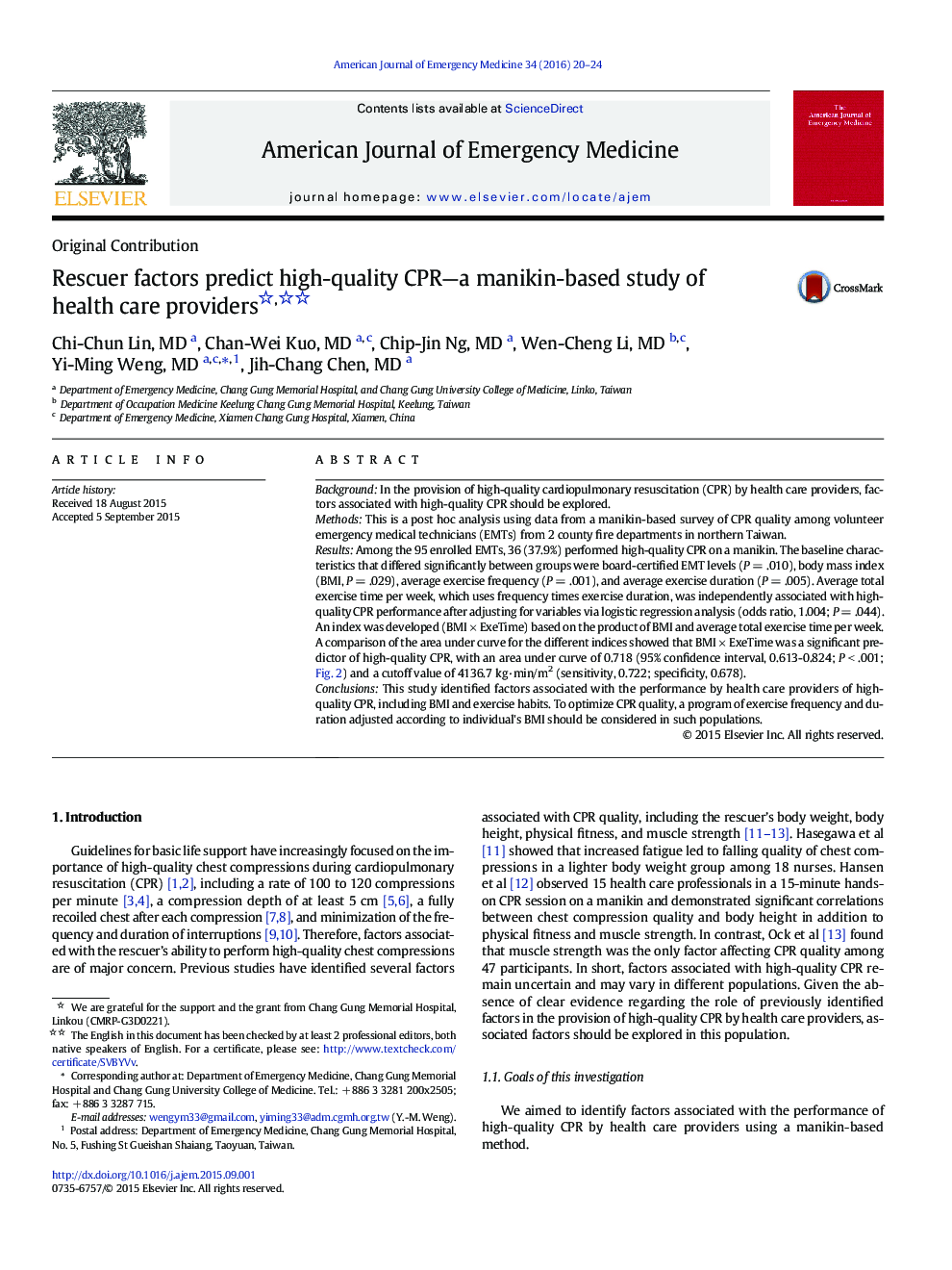| Article ID | Journal | Published Year | Pages | File Type |
|---|---|---|---|---|
| 3223411 | The American Journal of Emergency Medicine | 2016 | 5 Pages |
BackgroundIn the provision of high-quality cardiopulmonary resuscitation (CPR) by health care providers, factors associated with high-quality CPR should be explored.MethodsThis is a post hoc analysis using data from a manikin-based survey of CPR quality among volunteer emergency medical technicians (EMTs) from 2 county fire departments in northern Taiwan.ResultsAmong the 95 enrolled EMTs, 36 (37.9%) performed high-quality CPR on a manikin. The baseline characteristics that differed significantly between groups were board-certified EMT levels (P = .010), body mass index (BMI, P = .029), average exercise frequency (P = .001), and average exercise duration (P = .005). Average total exercise time per week, which uses frequency times exercise duration, was independently associated with high-quality CPR performance after adjusting for variables via logistic regression analysis (odds ratio, 1.004; P = .044). An index was developed (BMI × ExeTime) based on the product of BMI and average total exercise time per week. A comparison of the area under curve for the different indices showed that BMI × ExeTime was a significant predictor of high-quality CPR, with an area under curve of 0.718 (95% confidence interval, 0.613-0.824; P < .001; Fig. 2) and a cutoff value of 4136.7 kg·min/m2 (sensitivity, 0.722; specificity, 0.678).ConclusionsThis study identified factors associated with the performance by health care providers of high-quality CPR, including BMI and exercise habits. To optimize CPR quality, a program of exercise frequency and duration adjusted according to individual's BMI should be considered in such populations.
